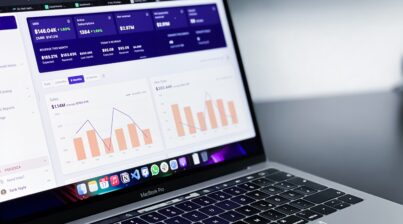Recruitment is arguably the most critical function of the employee lifecycle. Maybe five or ten years ago, employee retention was critical. There was an expectation for loyal employees with long tenures. Now, job-hopping is the norm and some employee turnover is expected.
Having the right software is going to be crucial for sourcing, attracting, and recruiting talent. Recruitment software is more than just an applicant tracking system (ATS) though. To really optimize your talent acquisition practices, finding the right system is crucial.
With so many systems and acronyms out there, it can be difficult to know the difference. Here are a few different systems and what they do.
What is Recruitment Software?
Recruitment software, in a nutshell, is any tech system that helps manage aspects of the full recruitment or talent acquisition lifecycle. Some systems are a bit more robust and can manage it from soup to nuts. While others are focused on streamlining a specific aspect of the lifecycle. Some systems even go as far as managing the onboarding process.
Applicant Tracking System (ATS)
ATS is probably the term you’re most familiar with when talking about recruitment software. It stands for Applicant Tracking System and is the product most used when talking about managing the recruitment process. Unfortunately, ATS can be limited in its overall impact on the candidate experience. Traditionally, the systems just manage the job requisition/approval process, candidate applications, job boards, and then track the applicant through the interview to job offer stages.
Job Board Aggregator (JBA)
To help with sourcing, job board aggregators are key in getting your open roles in front of a variety of potential candidates. JBAs scrapes online job boards to pull open roles onto their websites job board. So instead of a job seeker looking at many companies job boards, they can do a keyword search on one board for multiple companies. Sites like Indeed, Monster, and Google Jobs have all become the go-to for job seekers.
Social Recruitment Platform (SRP)
Social media is a big component of digital media and how we interact with each other daily. Platforms like LinkedIn are not just for social interaction but are also useful tools for the job market. Job seekers can engage with recruiters for potential opportunities. While talent acquisition specialists can build their talent pools with passive job seekers. It has made the recruitment process much more interactive and human experience.
Candidate Relationship Management (CRM)
Recruitment is shifting towards talent acquisition and with that shift comes more focus on the candidate experience. CRMs are proactive software where you can create talent pools and pipelines of both active and passive job seekers. The best CRMs also track engagement to give you great metrics for measuring success or identifying areas for opportunity.
Unfortunately, we can’t tell you which recruitment software is the best. They all have their pros and cons. You have to determine what your recruiting or talent acquisition goals are. Then choose a system that can align with your strategies.
The great thing about all these systems is the data that comes from them. They can provide a source for creating great metrics and an HR dashboard provides one place to manage all your metrics.
Sign up today for a free demo of our automated HR dashboard.













Comments are closed.